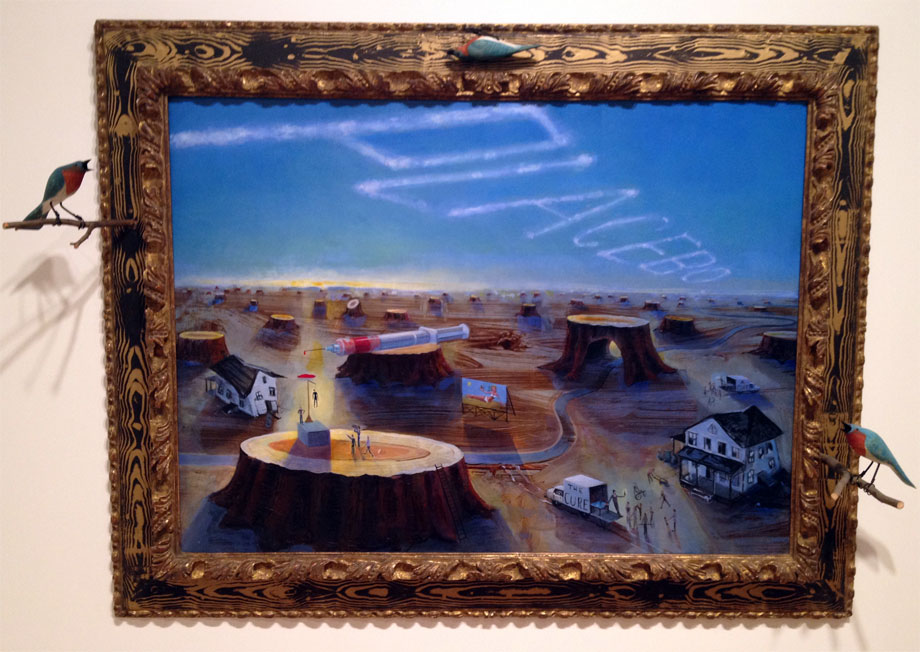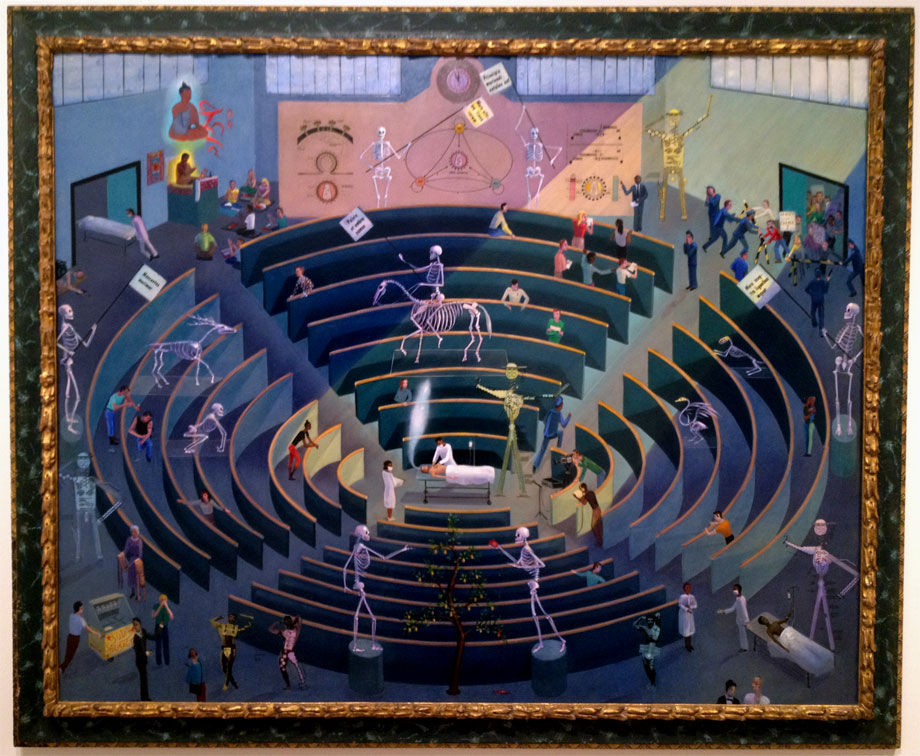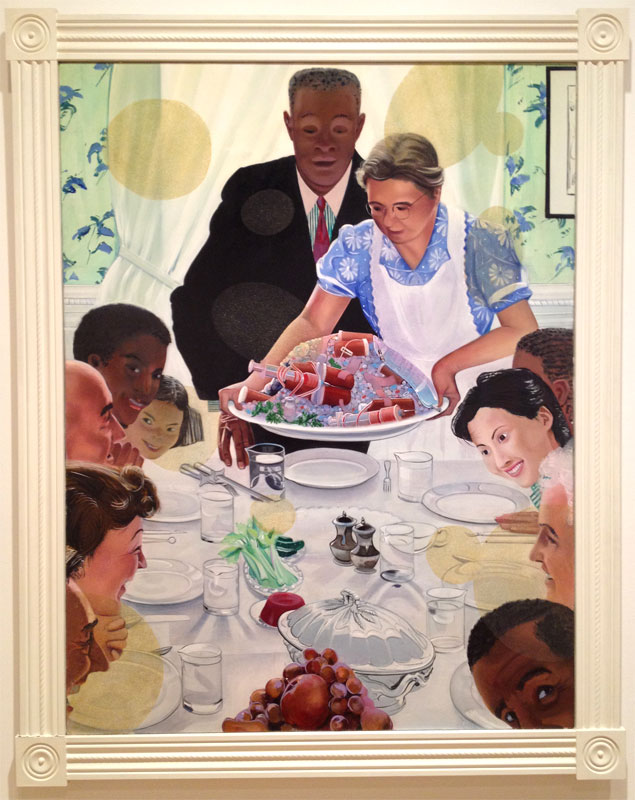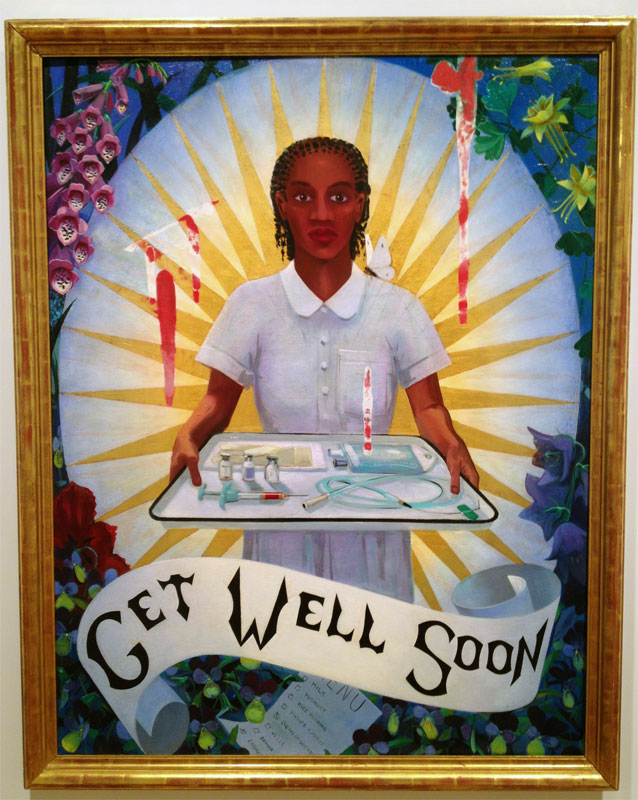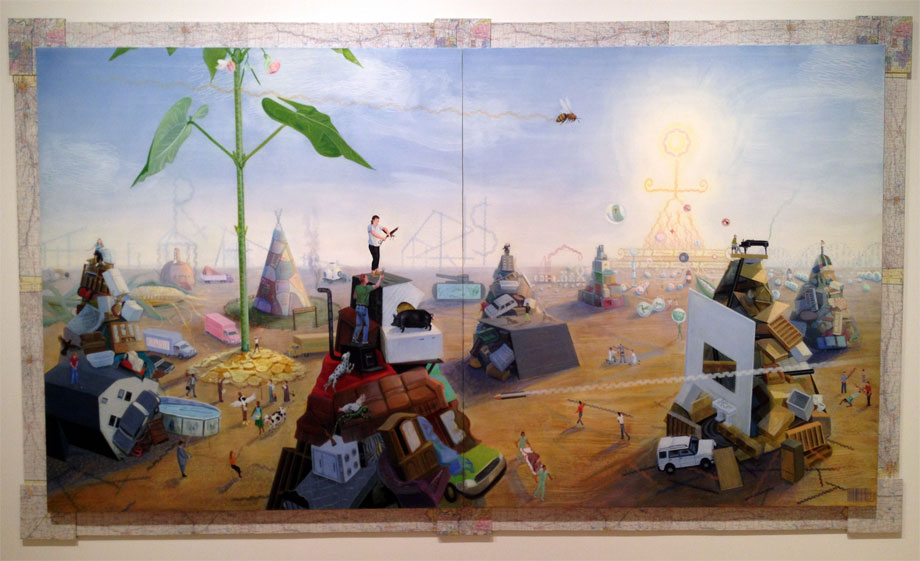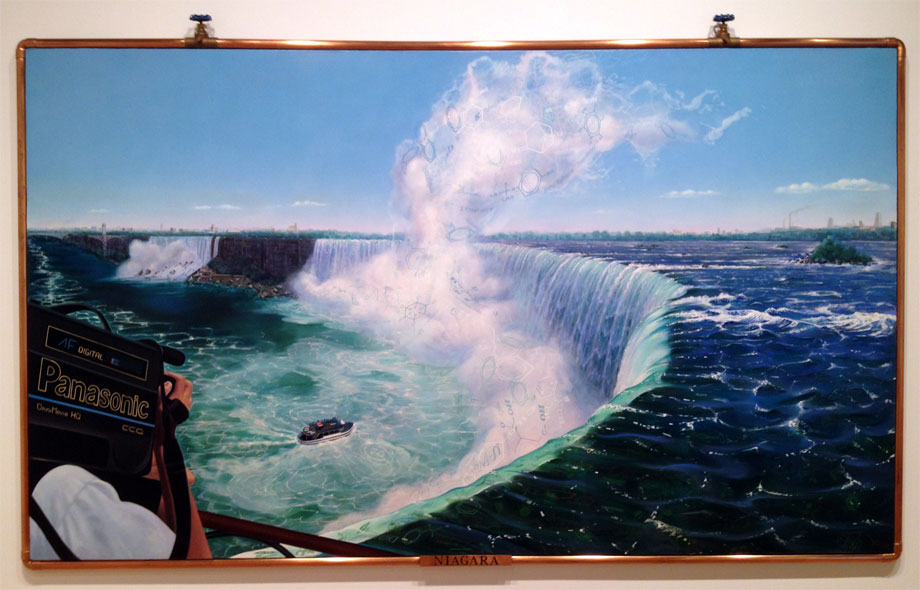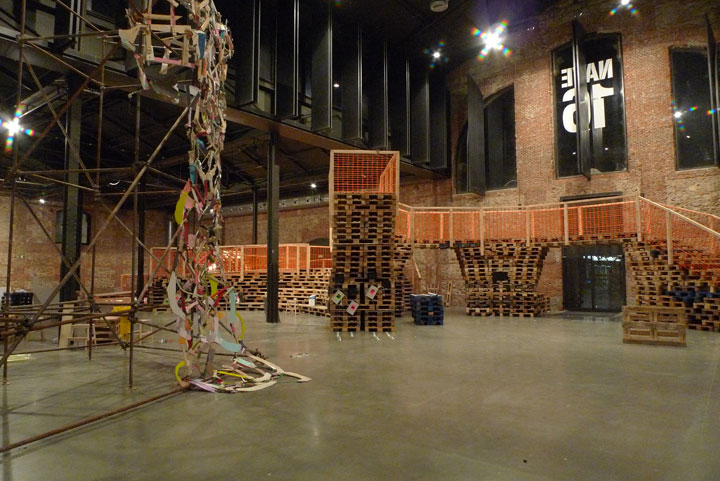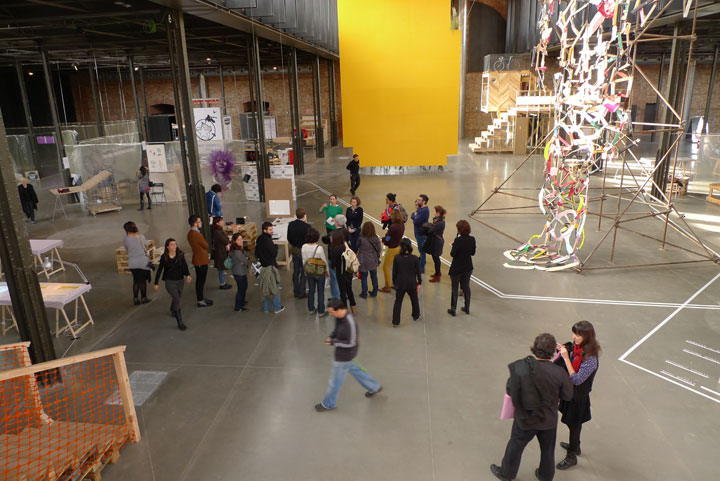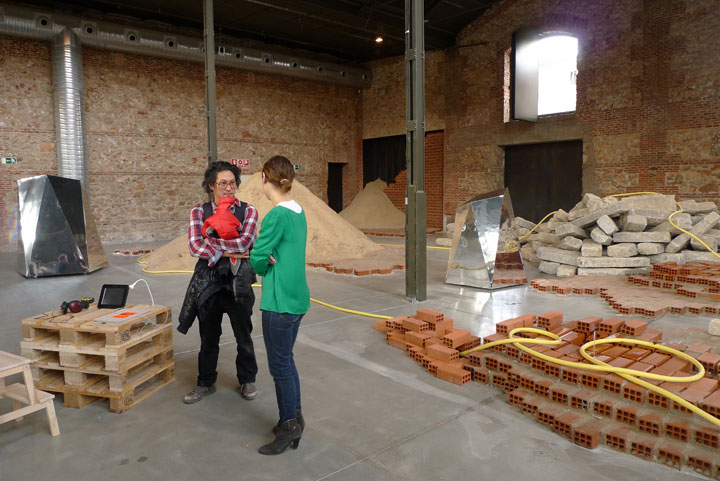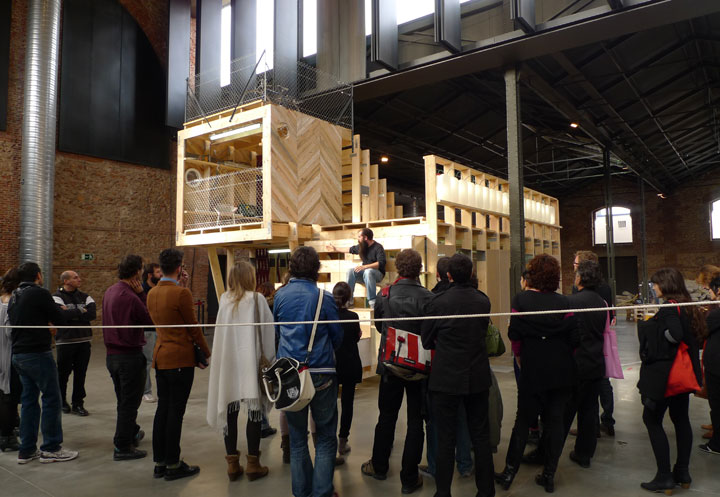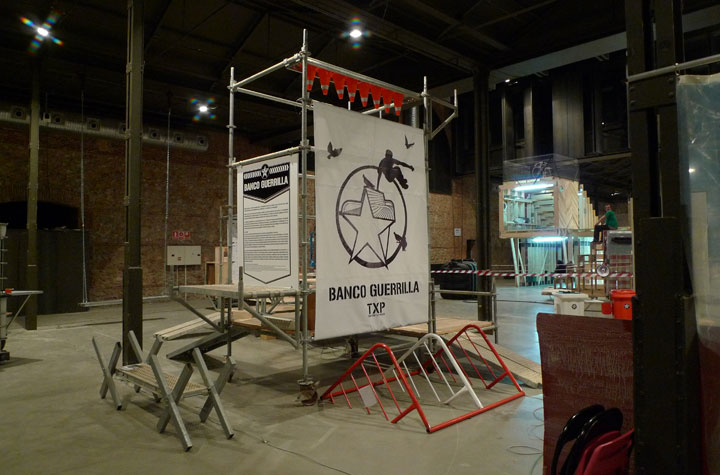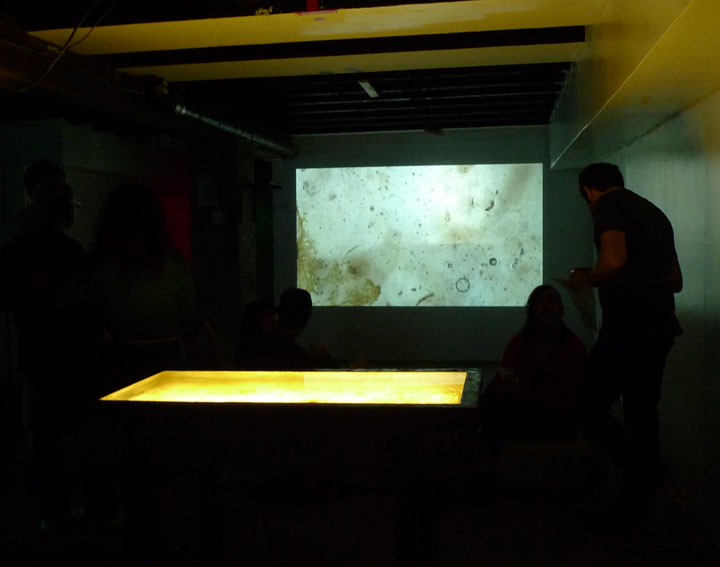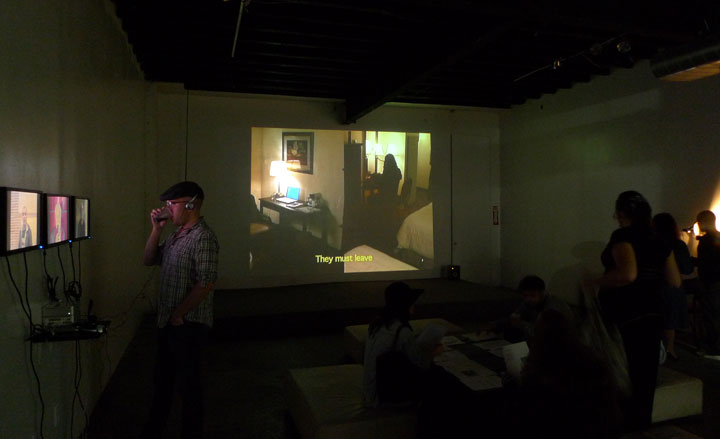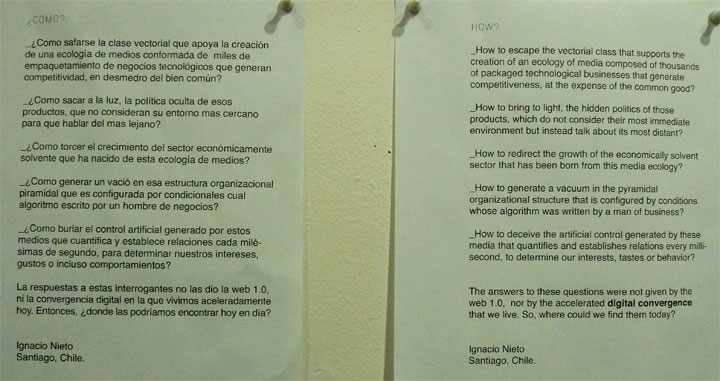Archive for the ‘art and activism’ Category
Frank Moore at Grey Art Gallery
I had forgotten about Frank Moore’s paintings until this past fall when Martha Wilson invited me a long to a meeting with Fales Library director Marvin Taylor. Marvin is an amazing cultural resource, a big fan of the Lower East Side arts movements of the 70s and 80s, he’s a guy filled with interesting stories. (To learn more about Marvin Taylor, visit Betty Ling Miu’s blog.) Before the meeting, Marvin asked Martha and I to sit down and watch “Beehive” a 1985 experimental dance film directed by Frank Moore and Jim Self. For the making of the film Frank Moore transformed his studio into an elaborate bee hive in which the dancers perform the elaborate lives of bees. Following the meeting, Marvin dropped us off at NYU’s Grey Art Gallery to see “Toxic Beauty: The Art of Frank Moore,” a retrospective that continues from the Fales Library special collections to the street level gallery across Washington Square Park.
It had been over a decade since I had seen “Beehive” or spent time with Frank Moore’s paintings and I immediately recalled how much these paintings inspired me during undergraduate years at UC Berkley. The paintings are detailed, elaborately portraying societal shortcomings. An element that strongly stands out in Frank Moore’s paintings is the construction of frames that are thematically tied to the paintings. Each painting has its own unique frame from copper water pipes to a frame wrapped with collaged maps. The exhibition captures how prolific Frank Moore was until he died of AIDS at the age of 48. Roberta Smith wrote an excellent review of the exhibition for the NY Times.
“a geography of being : una geografia de ser” at NY Hall of Science
The installation “a geography of being : una geografia de ser” that consists of a video game and networked kinetic wooden figures revolves around the immigrant experience. The installation is on view as part of ReGeneration at the New York Hall of Science through January 13th, 2013.
Undocumented Drones at New York Hall of Science
Last Thursday, October 25th was the celebration for the opening of ReGeneration, an exhibition at the New York Hall of Science in Corona Park, Queens that will be on view through January 13th. I will be writing one or more extended articles regarding the works in the exhibition. Meanwhile, I am posting a video of the Undocumented Drones being installed at the Hall of Science as part of my installation titled “a geography of being : una geografia de ser”. This is an installation comprised of a video game and three wooden figures with screens and motors that are networked to the game. The figures or undocumented drones help the player along through the game at specific points. Each figure has a corresponding icon on the game screen that tells the player that the small robot has a message. If necessary, the player may step away from the game to view the undocumented drone’s embedded screen for instructions.
a geography of being – Title Screen
This is the title screen for the new game that I’m building. The video game is one component of the installation titled “a geography of being” that will be featured as part of the exhibition ReGeneration at the New York Hall of Science. “a geography of being” is a creative reflection on the realities of undocumented youths in the United States. The exhibition opens on October 27th 2012 and will be on view through January 13th, 2013. Along with the video game, “a geography of being” will feature kinetic wooden sculptures titled “undocumented drones” that are networked to the game to help the player along the three levels of the game.
Interview at Matadero Madrid
Following the public opening of El Ranchito at Matadero Madrid in December, the Ranchito team conducted an interview regarding our collaboration for the project EXCEDENTES/EXCESS. Below is the interview.
New York Arts Practicum Announcement
New York Arts Practicum is an experiential summer program in New York City where advanced undergraduates, recent graduates, and graduate students participate in artmaking and intellectual culture outside of the traditional confines of the art school. The program centers around an internship with an active artist, a studio seminar, and weekly site visits to artist studios, galleries, and museums.
Through the intensive process of working with an artist on a day-to-day basis, students gain a view of their near futures as artists, learning models for negotiating a creative life outside of school in an expanded field of art prduction. The Practicum mentors are as follows (with three more to be added shortly): David Horvitz, Eva and Franco Mattes, Mark Tribe, Caroline Woolard, and Ricardo Miranda Zúñiga.
The critique/seminar and site visits reinvigorate the art student’s conventional modes of study.
Critique: Participants develop alternate strategies for creating work for critique without institutional studio facilities
Seminar: Visiting Faculty lead seminar on a set of readings related to their own practice. Visiting Artists in the seminar are: Steve Lambert, Trevor Paglen, Penelope Umbrico, and The Yes Men.
Art History/Contemporary Practices: Program Director Michael Mandiberg guides visits to galleries and museums, many of which will include conversations with curators and gallerists. Art and its contexts will be encountered and engaged with directly.
The 8 week New York Arts Practicum begins June 25th and ends August 17th, 2012. Application review begins April 2nd; application deadline April 16th.
Tuition is $2900, with some need-based financial aid available.
Academic credit is earned through arrangements with students’ home institutions.
For general questions please see the FAQ, and please contact us with specific questions.
Sign up for our mailing list.
Follow us on Twitter
Public Broadcast Cart in fall 2011 Art Journal
Sarah Kanouse has published an excellent essay on radio as art practice in the public space. The essay “Take It to the Air: Radio as Public Art” is printed in the fall 2011 Art Journal and discusses three different art projects utilizing radio as the primary medium. Following the introduction, Sarah discusses the work of Jon Brumit and Neighborhood Public Radio, my own Public Broadcast Cart and the work of art collective LIGNA. The final wrap up of the essay is quite inspiring:
In these projects, radio is a prosthetic technology that transmits the physical world into the space of electronic communications and materializes the vast space of electromagnetic resources into something material and physically apprehensible. In so doing, it forces a confrontation with and contestation of the rules that govern and control the use of both spaces, positioning radio for creative interventions in manifold public spaces – not only those we inhabit with our bodies, as much of the best public art does, but also those we inhabit with our passions, our excesses, our energies, and our speech.
Grand Opening of El Ranchito
The art center, El Matadero in Madrid, Spain inaugurated its latest project – El Ranchito last Thursday, December 15, 2011. El Matadero is dedicated to contemporary art practices and El Ranchito is a gigantic space (Nave 16) within El Matadero that is dedicated to artistic research, process and social engagement. Brooke and I collaborated with two artists in Madrid to begin a long-term project titled EXCEDENTES/EXCESS that revolves around food waste in our cities. Below are images from the final night of preparation for the opening and photos from the media tour on the morning of the opening as well as an image from the opening.
André Komatsu employed largely discarded construction materials around El Matadero to create “Landscapeknowhere – Timeout”. I enjoyed getting to now André Komatsu, however, I found his installation to be very formal, not particularly interesting and not in line with the mission of El Ranchito – research oriented and engaged with social practice.
Inteligencia Colectiva bases its practice in traveling the world to discover, document and adopt alternative means of construction. Their mission is to create a public archive of alternative modes of construction. As part of their residency, they constructed the future administrative space in El Ranchito that will be self-sustaining through a bicycle generator located at the top of the office tower.
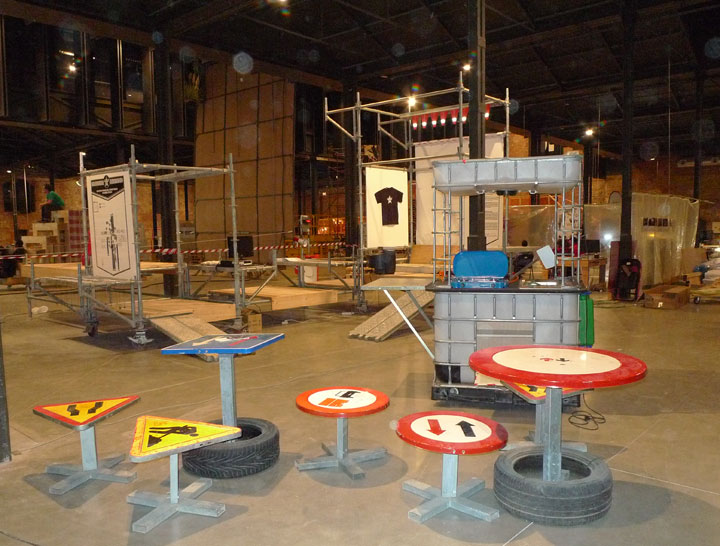
A large collective - Todo por la praxis - created a series of practical sculptures from discarded materials
Aesthetically one of my favorite installations or series of works is by the collective Todo para la praxis. Of all the resident artists, this group has been perhaps the busiest at designing and constructing. They have created a series of practical sculptures designed for public use. Amongst the constructions are a mobile street kitchen, a dining space, a mobile boom box, an info center. They continue building new things through workshops that they lead. Soon a children’s table and workspace will be introduced.
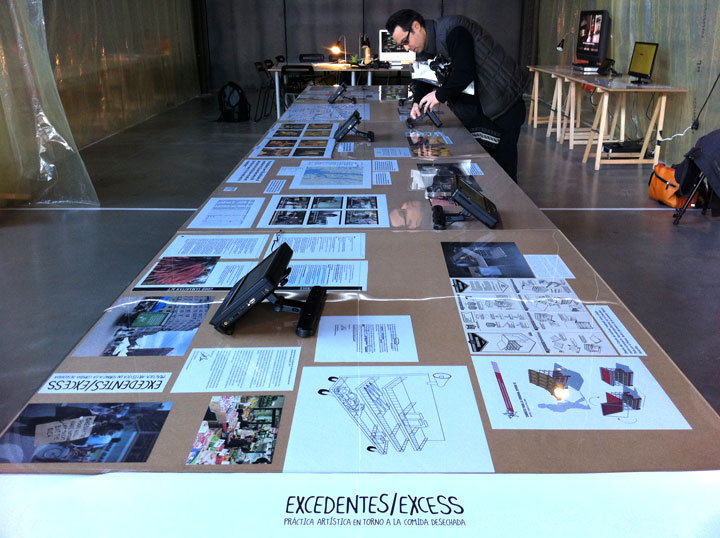
Installation presenting research from the project "EXCEDENTES/EXCESS" concerning food waste in Madrid & NYC
“EXCEDENTES/EXCESS” is a collaborative project between RICARDO MIRANDA Zuniga Y BROOKE SINGER (NUEVA YORK), JOSE LUIS BONGORE, BEATRIZ MARCOS Y SISSA VERDE and was selected as part of the public call for El Ranchito. The project revolves around the large amounts of food going to the dump when there are plenty of people hungry in the cities of New York and Madrid. In NYC the focus has been research and we hope to construct a “composting bicycle” in 2012. In Madrid, the realization of the food rescue and redistribution cart (pictured last in screen documentation) has lead the Madrid group to researching the possibility of establishing a law that would facilitate the collection and redistribution of discarded food that is safe to consume. A law similar to the Good Samaritan Law in the United States, signed by President Clinton.
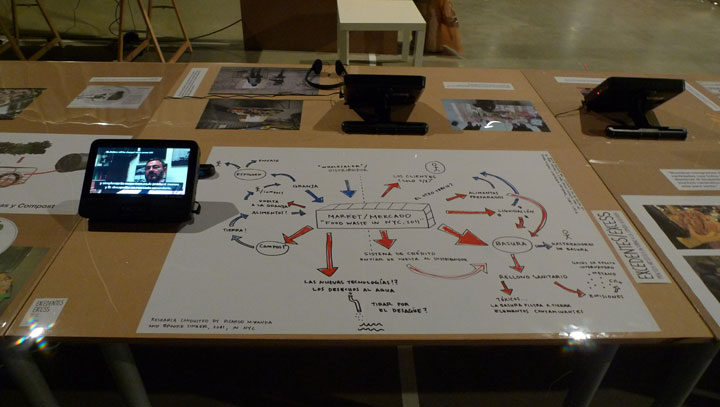
Research archive for the project "EXCEDENTES/EXCESS"
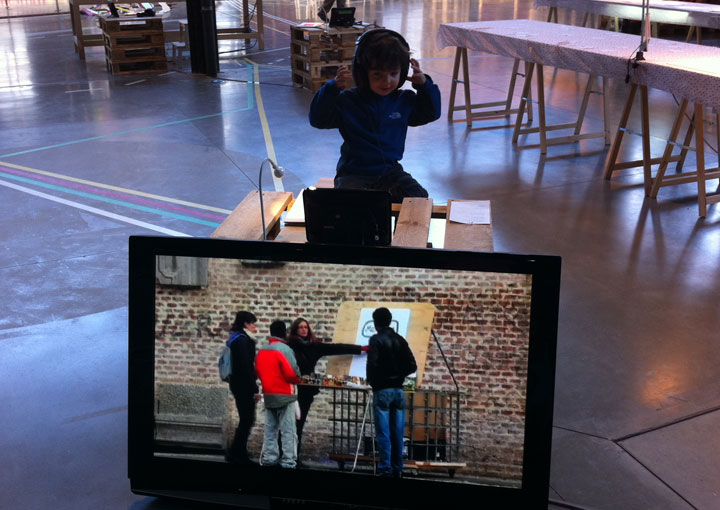
Madrid team realized the cart for food redistribution with the help of Todo por la praxis
Interview with Joel Berg, Segment 1 – On Food Waste
This past week, Brooke and I met with Joel Berg, director of the New York City Coalition Against Hunger and author of All You Can Eat, How Hungry Is America. We sought out Berg, because we’re collaborating on a food reclamation project with Spanish artist Jose Luis Bongore for a residency and exhibition at El Ranchito.
The goal of the project is to introduce mobile carts to food vendors in Madrid where they will place food that will otherwise be discarded as trash. Due to the high level of unemployment in Spain, dumpster diving is not uncommon. The desire is to present a system that will facilitate the reclamation of discarded food.
Here in NYC, Brooke and I have been researching food waste from supermarkets and in general the systems in place to salvage food. Questions we’ve been asking include: What goes to organization such as City Harvest? What stores participate in food redistribution? What becomes landfill leading to methane and greenhouse gas? So we decided to consult an expert. Joel Berg has devoted much of his career to eradicating hunger in the United States. We asked him if food reclamation at the supermarket level is a worthwhile endeavor. Below is the initial sequence from our interview. Shortly I will post more edits.
Ecologías Correlativas at 319 Scholes
Last Thursday I made it to the opening of Ecologías Correlativas at 319 Scholes curated by chimera+ and was treated to excellent new work. The piece pictured above left the strongest impression on me as I think that it’s beautiful at many levels. “untitled slime moulds” by Dan Baker is a stop motion animation of mold seeking out food and surviving. The artist set up a backlit mold environment that he documented over an extended period of time. The final video isn’t simply a compilation of the stills, but rather the artist pans throughout the environment following the mold as it moves and grows, seeking food or dying. The animation is beautifully rendered and the manner in which the mold moves and expands appears programmatic. It brought to mind some of the more beautiful data visualizations that I’ve seen in different years, however this is a living entity moving in space. The piece immediately reminded me of Thomas Aquinas’s writings and his argument of geometry as the language of God.
Although I have mixed feelings about my work in the show, projected in the back room and documented below, I was flattered to be part of a thoughtful and compelling exhibition that thematically stemmed from Félix Guatarri’s “Three Ecologies”. The beginning of the video “El Rito Apasionado” is available online.
Another piece that I thoroughly enjoyed is Miguel Soares “Place in Time”… brilliant!
Miguel Soares, Place in Time from migso on Vimeo.
And below is a textual contribution by the Chilean artist Ignacio Nieto.
The exhibition is only up until the 27 of this month and definitely worth the trip. Gallery Hours: Thursday – Saturday, 2:00pm – 6:00pm, and by appointment, 319 Scholes, Brooklyn, NY.
